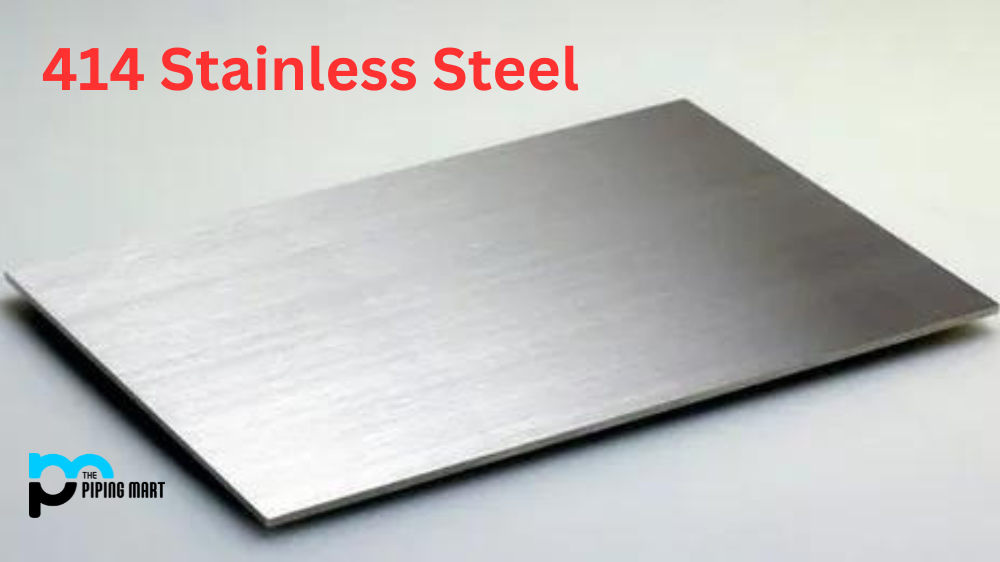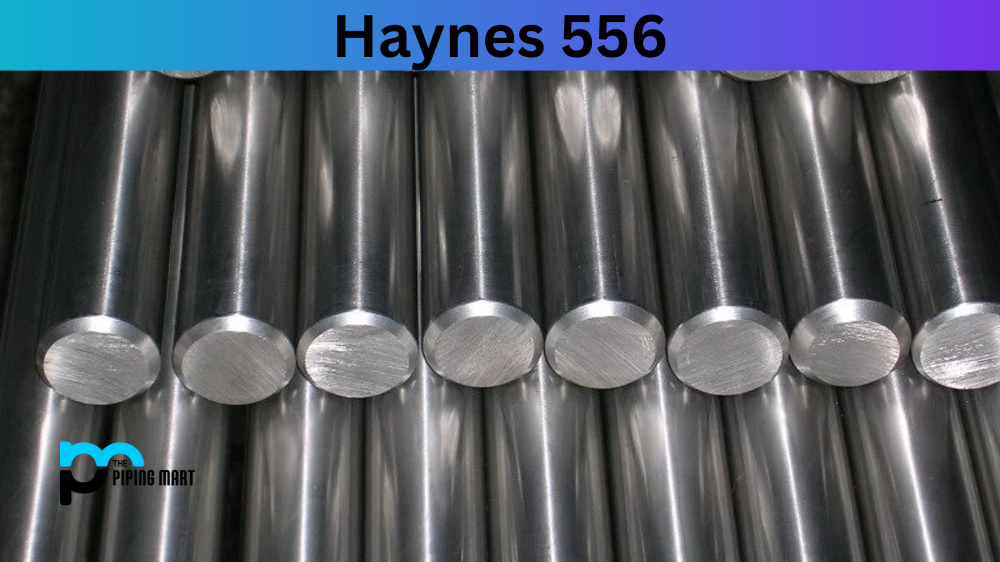Stainless steel is a type of steel that is corrosion-resistant and contains at least 10.5% chromium. One of the most popular types of stainless steel is 414 stainless steel, known for its high strength, excellent corrosion resistance, and good machinability. This blog post will closely examine 414 stainless steel’s composition, mechanical and physical properties, various uses, and heat treatment and welding techniques.
What is 414 stainless steel?
414 stainless steel is a type of martensitic alloy containing iron, chromium and a minimal amount of carbon. It is known for its relatively high tensile strength and good corrosion resistance properties, making it ideal for construction applications in harsh environments. Its highly machinable features make it a perfect material for structural components, fasteners and other metal parts.
414 Stainless Steel Composition
414 stainless steel is a type of martensitic steel that contains 11.5-13.5% chromium and 0.15-0.25% molybdenum. It also contains small amounts of carbon, manganese, phosphorus, sulfur, and silicon. This composition gives it excellent corrosion resistance properties and high strength. It is also magnetic and can be hardened through heat treatment.
| Element | Content (%) |
|---|---|
| Iron, Fe | 83.4 |
| Chromium, Cr | 12.5 |
| Nickel, Ni | 1.88 |
| Manganese, Mn | 1.0 |
| Silicon, Si | 1.0 |
| Carbon, C | 0.15 |
| Phosphorous, P | 0.040 |
| Sulfur, S | 0.030 |
414 Stainless Steel Mechanical
414 stainless steel has a tensile strength of 655 MPa, yield strength of 415 MPa, and a low elongation of 15%. Its hardness ranges from 187 to 241 Brinell.
| Properties | Metric | Imperial |
|---|---|---|
| Tensile strength | 1795 MPa | 260300 psi |
| Yield strength (@strain 0.200%) | 1013 MPa | 146900 psi |
| Elastic modulus | 200 GPa | 29000 ksi |
| Poisson’s ratio | 0.27-0.30 | 0.27-0.30 |
| Elongation at break (in 50 mm) | 15% | 15% |
| Izod Impact (hardened and tempered) | 30-80 J | 22.1-59 ft.lb |
| Hardness, Brinell (converted from Rockwell C hardness) | 459 | 459 |
| Hardness, Knoop (converted from Rockwell C hardness) | 506 | 506 |
| Hardness, Rockwell C (before testing) | 48 | 48 |
| Hardness, Vickers (converted from Rockwell C hardness) | 487 | 487 |
414 Stainless Steel Physical Properties
Regarding physical properties, it has a density of 7.75 g/cm³ and a melting point of 1450°C. The steel also has good oxidation resistance at high temperatures of up to 815°C.
| Properties | Metric | Imperial |
|---|---|---|
| Density | 7.80 g/cm3 | 0.282 lb/in³ |
414 Stainless Steel Equivalents
- AMS 5615
- ASTM A276
- ASTM A314
- ASTM A473
- ASTM A511
- ASTM A580
- FED QQ-S-763
- SAE 51414
- SAE J405 (51414)
414 Stainless Steel Thermal Properties
| Properties | Metric | Imperial |
|---|---|---|
| Thermal expansion co-efficient (@0-100°C/32-212°F) | 10.4 µm/m°C | 5.78 µin/in°F |
| Thermal conductivity (@100°C/212°F) | 24.9 W/mK | 173 BTU in/hr.ft².°F |
414 Stainless Steel Uses
Because of its excellent strength and corrosion resistance, 414 stainless steel is widely used in various applications, including bearings, pump shafts, valve components, food processing machinery, and cutlery. It is also commonly used in the aerospace and medical industries due to its high toughness and non-magnetic properties.
414 Stainless Steel Corrosion Resistance
414 stainless steel has good corrosion resistance even in harsh environments such as marine or chemical plants. However, it is essential to note that its resistance may be reduced in sulfuric, nitric, or hydrochloric acids. It can be hardened through heat treatment or coated with a protective layer to improve corrosion resistance.
414 Stainless Steel Heat Treatment
414 stainless steel can be hardened through heat treatment, which involves heating the steel to a high temperature, followed by quenching in oil, air, or water. This treatment not only improves the strength and hardness of the steel but also increases its corrosion resistance. However, this process may also cause the steel to become brittle.
414 Stainless Steel Machining
414 stainless steel has good machinability due to its magnetic properties and can be easily cut, drilled, and turned.
414 Stainless Steel Welding
When welding, a filler metal with a higher chromium content is recommended to prevent cracking. Preheating the steel before welding is also advisable to reduce the risk of distortion.
Conclusion:
In conclusion, 414 stainless steel is a highly versatile steel widely used due to its high strength, excellent corrosion resistance, and good machinability. Its various applications make it an essential component in many industries, and its heat treatment and welding techniques provide flexibility and adaptability. So, if you are looking for steel that can withstand harsh environments and provide strength and durability, you should consider 414 stainless steel.

Meet Bhavesh, a seasoned blogger with a wealth of knowledge and experience. From metal products manufacturing to retail, Bhavesh has a diverse background in various industries and is dedicated to sharing his insights and expertise with readers.




